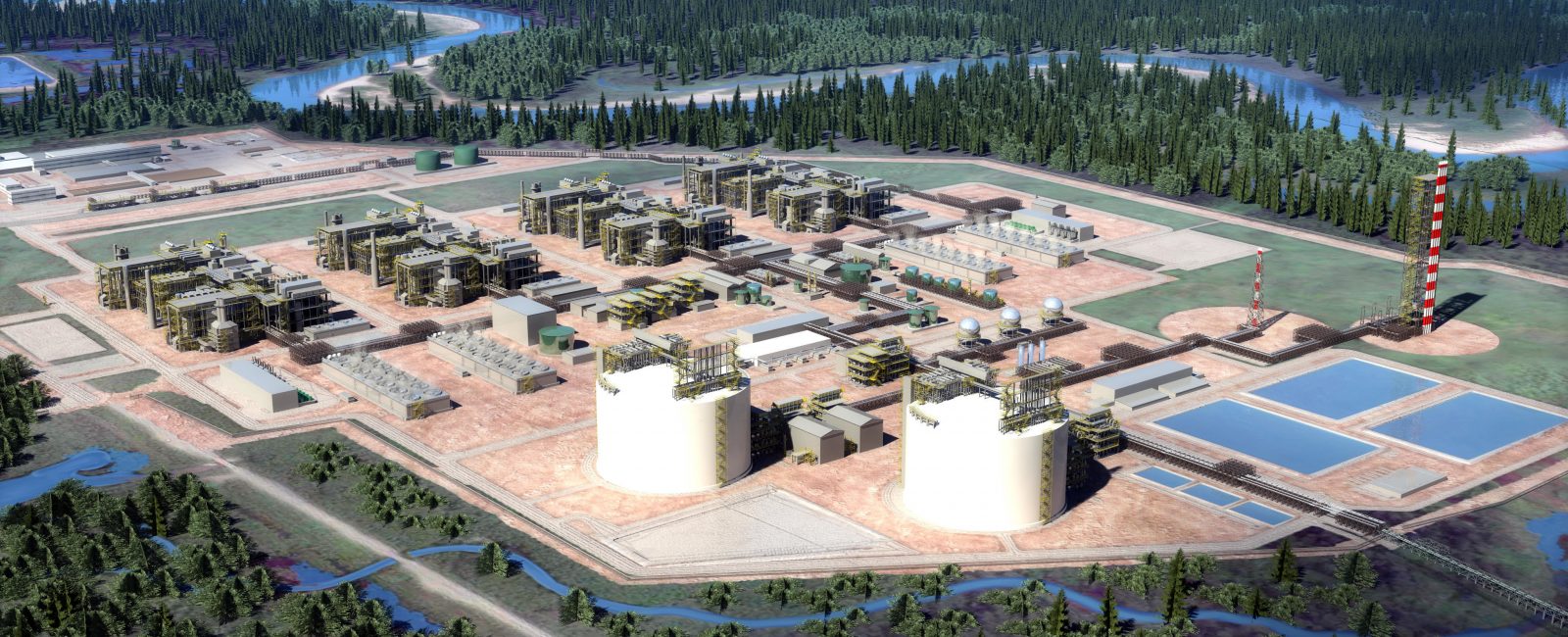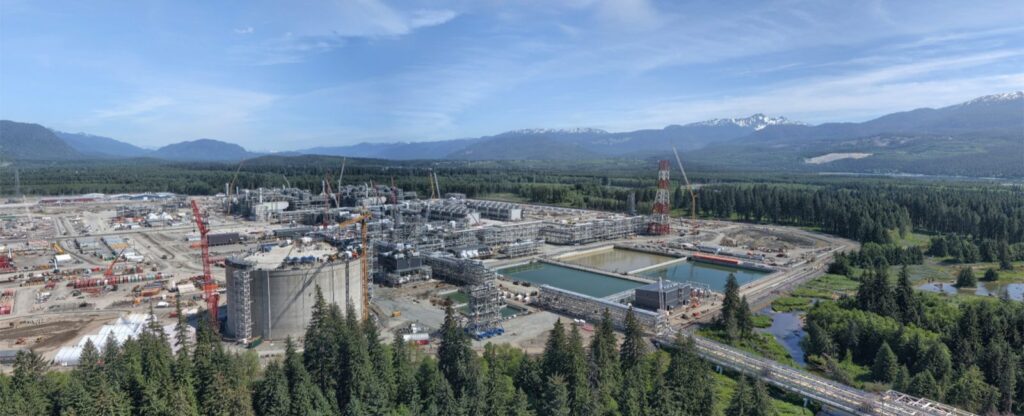Apr 08, 2019
Take an interactive tour through LNG Canada’s facility

Share
On October 1, 2018, following seven years of community engagement and consultation with First Nations, local communities, all levels of government, the business community, regulators and many others, LNG Canada made history when we announced our Joint Venture Participants’ Final Investment Decision to build an LNG export facility in Kitimat, B.C. One day later, the Project moved into the construction phase with progress now well underway.
Interested in seeing what our facility will look like? Take an interactive site tour by clicking play below:
The rendering in this interactive site map shows the LNG Canada project at full build out, which includes both Phase 1 and Phase 2. LNG Canada is currently in construction for Phase 1.

About our facility
Key features of our proposed facility include:
- LNG Processing Units: Natural gas will enter the processing units, or ‘trains’ – where carbon dioxide, water, condensate, sulphur and any other impurities will be separated out. The gas will then be chilled to approximately -162°C and turned into LNG. Condensates will be stored and railed out to market.
- Storage Tanks: LNG will be piped to storage tanks until it is loaded onto LNG carriers at the wharf.
- LNG Loading Lines: Two LNG loading lines will transfer LNG from the storage tanks to the wharf and the LNG carrier. They will be insulated to conserve energy and to keep the LNG in its liquid form.
- Marine Terminal: An existing wharf will be redesigned to accommodate up to two LNG carriers at a time. Every LNG carrier will be assisted at the terminal by up to three tugboats – tugs will maneuver alongside the LNG carrier, positioning it at a very low speed until the LNG carrier is secured at the berth.
- Rail Yard: The rail yard inside the facility will be connected into an existing rail system, which will be used to load condensate, a petroleum liquid that is one of the natural by-products of turning natural gas into LNG. The condensate will be stored temporarily in tanks on the site and then transported off-site by rail car for sale to customers.
- Water Treatment Facility: The facility will draw water from the Kitimat River for use in process cooling, drinking and other purposes. Water taken from the river will be treated as needed prior to use. Water will be reused in a closed loop system to reduce water loss. Most of the water used by the cooling system will evaporate during use. Water that does not evaporate will be treated, along with any other facility wastewater, in an on-site wastewater treatment facility before releasing it into Kitimat Arm.
- Flare Stacks: Two flare stacks – one that is approximately 60 metres tall and a second that is approximately 125 metres tall – will act as safety devices, a common feature in all LNG facilities. When the facility is operating normally, residents can expect to see a relatively small, clean burning flame (essentially, a pilot light) at the top of the stacks. The size of this pilot light will be approximately three feet in height, and will likely not be visible during the day.
- Workforce accommodation: To limit the impact of a large influx of people on the Kitimat community, LNG Canada is building Cedar Valley Lodge – a workforce accommodation centre adjacent to work site, which can house up to 7,500 people in single room accommodation. Designed with the worker in mind, people working on the project will be provided bus transportation to site, to reduce the number of automobiles on the road and address road safety issues. For residents of Terrace that work on the construction of the facility, shuttle bus transportation will be provided.

About our project
From the beginning, LNG Canada set out to be a company in a category of one – the project of choice for British Columbia and Canada. We made every decision keeping safety, economic, environmental and community interests top-of-mind.
Along with our prime contractor JGC Fluor, we will continue to work closely with the community, First Nations and municipal, regional, provincial and federal levels of government to understand how our company can help achieve collective social, economic and environmental aspirations.
We are working to minimize potential environmental impacts – whether at the site or in the marine environment. We are committed to listening, learning and working together to share information, to share value, and to meet the needs of the community.
We believe LNG Canada can be a catalyst for northern B.C. development and an opportunity for British Columbians in both the north and south of the province, to realize benefits through employment and the economic contributions.
LNG Canada is a project of national significance and will enable Canada to access new trading partners for its abundant natural resources. Read more.


